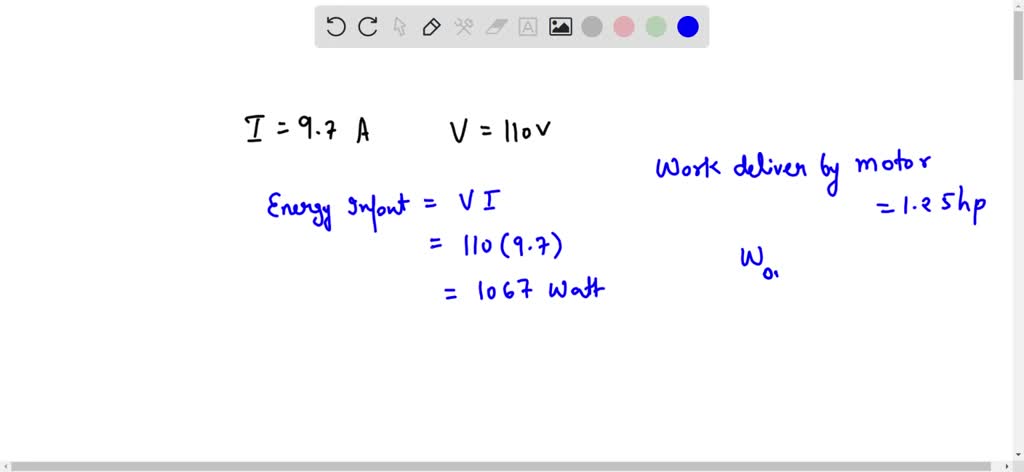Buckle up, folks! We’re diving into the electrifying world of electric motors and their insatiable thirst for amps. Get ready for a current-charged journey as we explore what happens when an electric motor draws 150 amperes—it’s gonna be a wild ride!
From understanding the basics of electrical current to troubleshooting amp-hungry motors, we’ve got you covered. So, sit back, grab a cup of your favorite high-voltage beverage, and let’s get this party started!
Electrical Current

Electrical current is the flow of electric charge through a conductor. It is measured in amperes (A). The amount of current flowing through a conductor is determined by the voltage applied to the conductor and the resistance of the conductor.
Electrical current can be measured using a variety of devices, including ammeters, clamp meters, and multimeters.
The relationship between electrical current, voltage, and resistance is given by Ohm’s law: I = V / R, where I is the current in amperes, V is the voltage in volts, and R is the resistance in ohms.
Electric Motors: An Electric Motor Draws 150 Amperes
An electric motor is a device that converts electrical energy into mechanical energy. Electric motors are used in a wide variety of applications, including appliances, power tools, and industrial machinery.
There are many different types of electric motors, including AC motors, DC motors, and brushless motors. Each type of motor has its own advantages and disadvantages.
Electric motors convert electrical energy into mechanical energy by using a magnetic field to rotate a rotor. The rotor is connected to the output shaft of the motor, which is then used to power the device that the motor is driving.
Amperage
Amperage is a measure of the amount of electrical current flowing through a conductor. It is measured in amperes (A).
Amperage is related to the flow of electrons through a conductor. One ampere is equal to the flow of 6.241 × 10 18electrons per second.
The amperage drawn by an electric motor is determined by a number of factors, including the voltage applied to the motor, the load on the motor, and the efficiency of the motor.
Electrical Circuits
An electrical circuit is a path for electrical current to flow. Electrical circuits consist of a source of electrical energy, such as a battery or a power supply, a conductor, and a load, such as a light bulb or an electric motor.
Electric motors are typically connected in circuits in series or in parallel. In a series circuit, the current flows through each component in the circuit in turn. In a parallel circuit, the current flows through each component independently.
When working with electrical circuits, it is important to take safety precautions to avoid electrical shock and fire.
Troubleshooting Electric Motors
If an electric motor is drawing excessive amperage, it may be a sign of a problem. Common problems that can cause an electric motor to draw excessive amperage include:
- A faulty motor
- A problem with the electrical circuit
- A mechanical problem with the load
To troubleshoot an electric motor, follow these steps:
- Check the electrical circuit to make sure that it is providing the correct voltage and amperage to the motor.
- Inspect the motor for any signs of damage or wear.
- Check the load to make sure that it is not putting too much strain on the motor.
If you are unable to troubleshoot the problem yourself, it is important to contact a qualified electrician.
Ultimate Conclusion
And there you have it, folks! We’ve navigated the ins and outs of electric motors drawing 150 amperes. Remember, it’s all about understanding the flow of electrons, the impact of amperage, and the importance of keeping your motors in tip-top shape.
Stay charged up and keep those amps in check!
Commonly Asked Questions
Q: Why does my electric motor draw so many amps?
A: It could be due to a mechanical issue, such as a jammed rotor or excessive friction, or an electrical problem, like a short circuit or faulty windings.
Q: How can I reduce the amperage drawn by my electric motor?
A: Check for any mechanical issues, reduce the load on the motor, or consider using a variable frequency drive to optimize motor performance.
Q: Is it safe to run an electric motor that draws 150 amps?
A: It depends on the motor’s specifications. Always refer to the manufacturer’s guidelines and ensure that the motor is properly sized for the application.